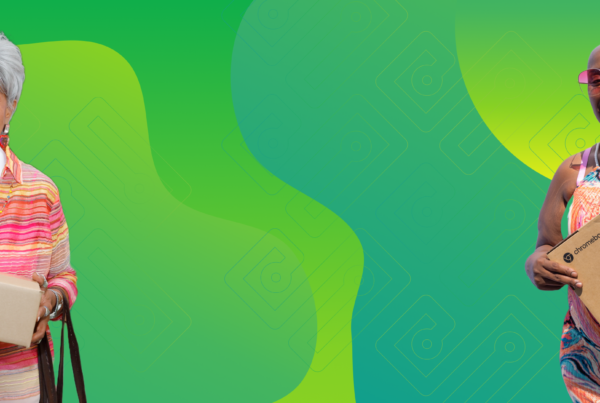Why are you practicing social distancing? We may all have slightly different answers, but ultimately, we social distance to protect ourselves and those we love. What happens when some people in the community are unable to social distance because they do not have the resources to effectively manage their families’ lives remotely?
Digital inclusion is no longer just a problem for the low-income folks in our communities, it has an impact on everyone.
In the past few weeks, I have seen plenty of media coverage about how students and families need computers and internet connections to continue their learning and for telehealth services. While this is absolutely true and students are falling behind every day they are not in school and not connected, the problem is much more important than that; and it seems to me that many of us are missing the big picture. Viruses like SARS-CoV-2 (COVID-19) spread through close-range transmission, which is why health officials have asked us to quarantine ourselves to prevent as much unnecessary movement as possible. Simply put, the fewer people that move around, the slower the infection spreads.
So what happens when people have no choice? Estimates of people who do not have access to broadband internet and/or computers at home range from 21.3 million (based on census blocks where, if just a handful have access, hundreds are counted) to 162 million (based on Microsoft’s research team using data from individual computers). I recently spoke to a doctor serving on the COVID team at UCLA’s Olive View Medical Center who told me about a 32 year-old single mom they admitted late last week who tested positive for COVID. Due to the restrictions they have in the COVID unit, she was unable to see her daughter.

This woman was in tears and ready to leave the hospital. While we can all recognize this as a heartbreaking decision to make, it means there is another infected person walking around potentially infecting others.
This extends much further than those who are already infected. For example, people have to leave their homes to pay their bills, visit a doctor, and purchase groceries, putting them at greater risk. Every time someone moves around in public, they risk contracting and spreading this disease.
Think about the last 5 people you were in contact with. Statistically in the U.S., 1 of those 5 does not have access to the technology they need to stay at home in accordance with health official’s guidelines. Without access, there is also a delay, or lack, of information about the details of safer-at-home orders and the seriousness of the situation, which leads to an ignorance of or disregard for the restrictions in place. These same populations are likely to be essential workers, stocking grocery shelves that your deliveries are pulled from for example. If they get sick because they had to go to the bank, the virus can easily be passed along to your doorstep.
The lack of digital inclusion disproportionately affects minorities and low-income communities. It is no coincidence that these are also the communities that are suffering the highest rates of infection and death due to this disease. For example: in Chicago, the neighborhoods (zip codes) with the highest COVID-related deaths directly correlate to the neighborhoods that are the least connected.

Many cities and municipalities are using public internet or internet-enabled school busses in parking lots as a temporary solution, but that still has people moving leaving the home to get to the location, interacting with gas pumps, public restrooms, and potentially other people. These solutions still force people to make the choice between their family’s safety and their family’s education and future. This is not a choice anyone should be faced with.
Ensuring that people have digital access will limit their movement by empowering them to complete a much larger number of their tasks from home. The more we can limit movement, the sooner restrictions will be lifted. In short, digital inclusion is no longer just a problem for those who are not connected, it is a problem for everyone.
Adam Sharma works to increase Digital Inclusion and Equity at human-I-T, an organization dedicated to connecting low-income households with high-speed internet, computers, and digital literacy training by repurposing corporate technology.


.png)



